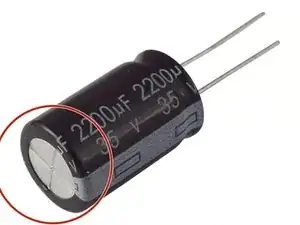Introduction
Tools
Parts
-
-
ATTENTION: 230V are processed in the monitor. So take the necessary care. And a little experience with electronics and soldering should be available.
-
-
-
The main focus here is on troubleshooting. First disconnect all plugs and then loosen the housing screws.
-
Now check whether an electrolytic capacitor has "blown up". Most electrolytic capacitors have a notched cross at the top and are flat there. If this surface is curved upwards, the electrolytic capacitor is defective.
-
-
-
Now remove the circuit board. To do this, loosen all connections and remove the corresponding screws.
-
Next, the defective electrolytic capacitor must be desoldered (desoldering pump or desoldering wire help).
-
Now replace the defective electrolytic capacitor. The new electrolytic capacitor must have the same capacitance and voltage. The connection wires and height should also be the same.
-
Work through the steps in reverse order to reassemble your device.

